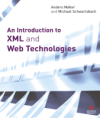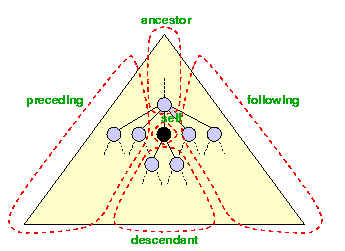
Anders Møller and Michael Schwartzbach, February 2006

|
NOTE:
These slides have not been updated since 2003. They have been superseded by the book
Anders Møller and Michael Schwartzbach, February 2006 |
|
| THE XML REVOLUTION - TECHNOLOGIES FOR THE FUTURE WEB |
|
| child | the children of the context node | |
| descendant | all descendants (children, childrens children, ...) | |
| parent | the parent (empty if at the root) | |
| ancestor | all ancestors from the parent to the root | |
| following-sibling | siblings to the right | |
| preceding-sibling | siblings to the left | |
| following | all following nodes in the document, excluding descendants | |
| preceding | all preceding nodes in the document, excluding ancestors | |
| attribute | the attributes of the context node | |
| namespace | namespace declarations in the context node | |
| self | the context node itself | |
| descendant-or-self | the union of descendant and self | |
| ancestor-or-self | the union of ancestor and self |
Note that attributes and namespace declarations are considered a special kind of nodes here.

Some of these axes assume a document ordering of the tree nodes. The ordering is the left-to-right preorder traversal of the document tree - which is the same as the order in the textual representation.
The resulting sets are ordered intuitively, either forward (in document order)
or reverse (reverse document order).
For instance, following is a forward axis, and
ancestor is a reverse axis.
(Frustratingly, each technology uses a slightly different tree model...)
|
| COPYRIGHT © 2000-2003 ANDERS MØLLER & MICHAEL I. SCHWARTZBACH |
|